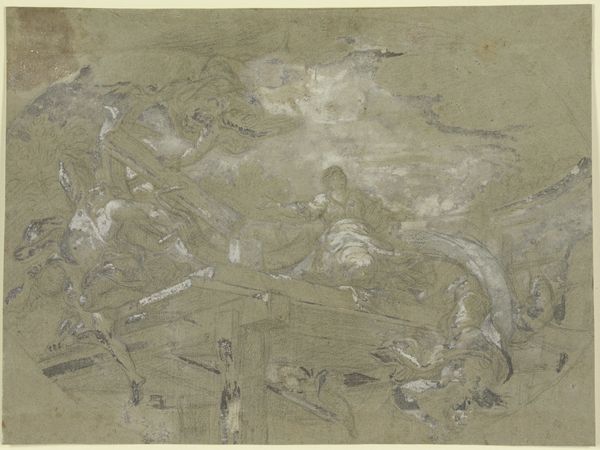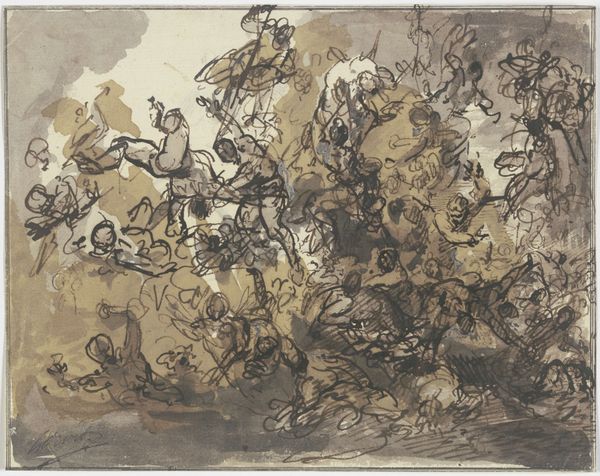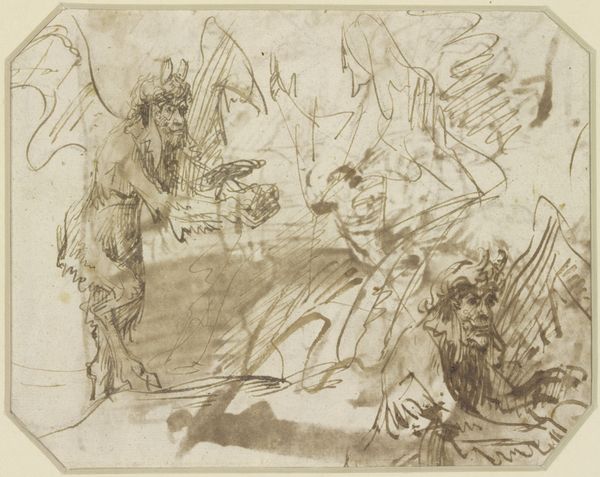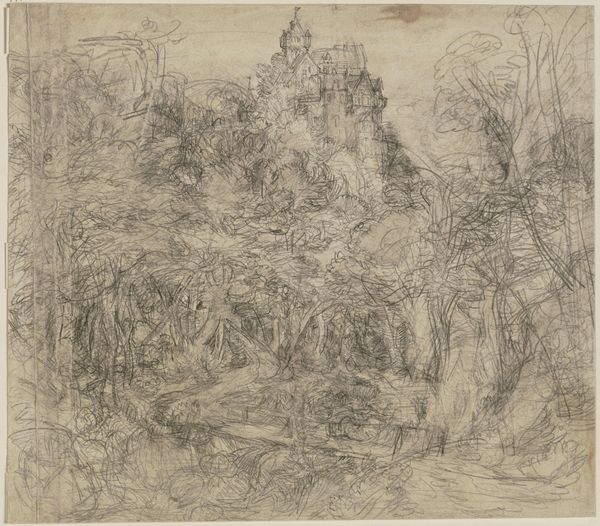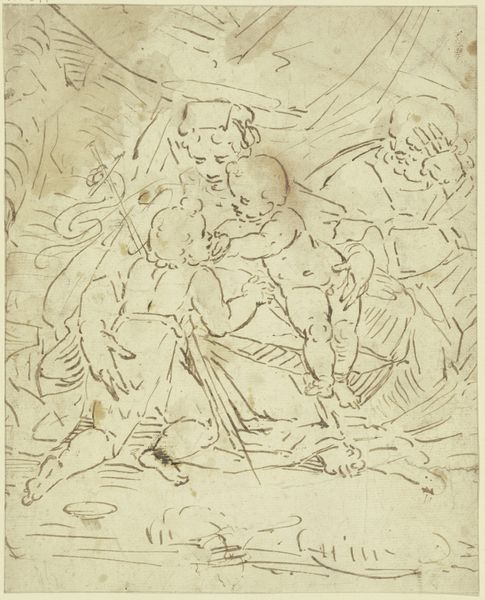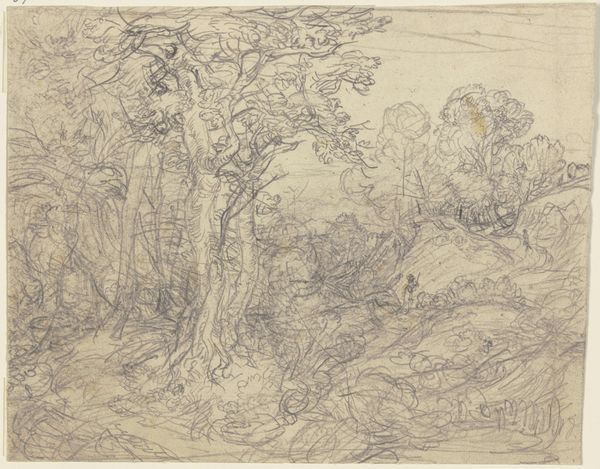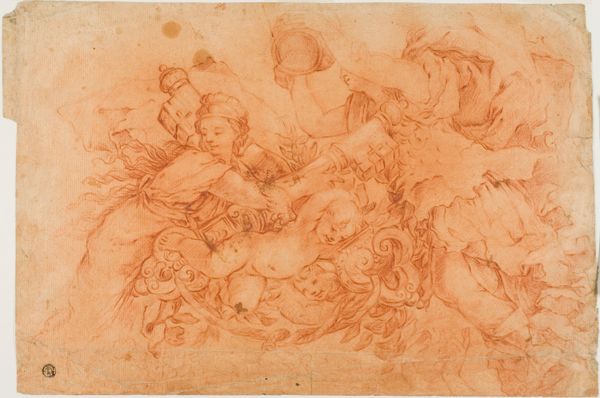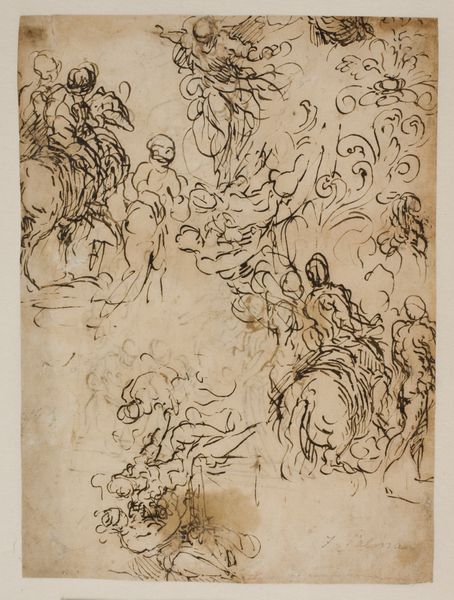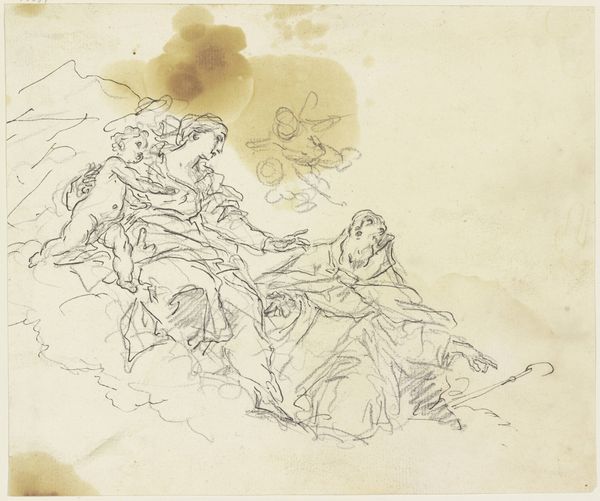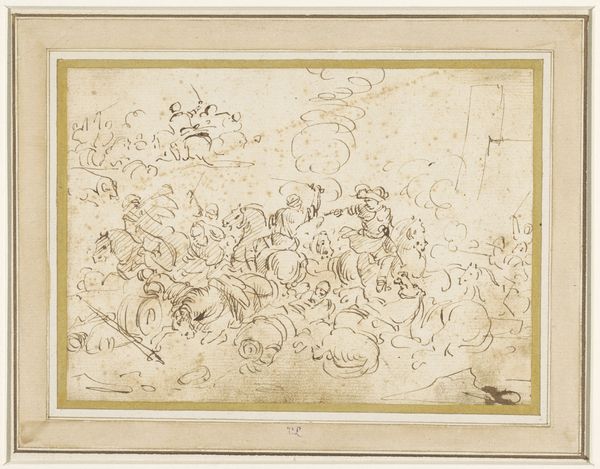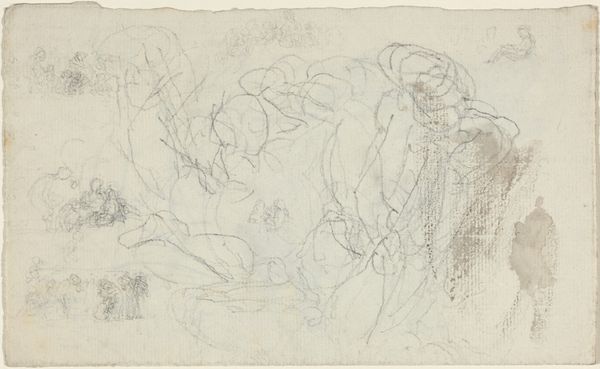
Copyright: Public Domain
Curator: What a whirlwind of line and shadow! Before us is "Flaneuere und Silhouette Münchens," a drawing rendered in ink on paper, dating back to 1832, created by Fritz Bamberger, here in the Städel Museum. My first impression is one of morbid festivity—almost like a medieval danse macabre reimagined through a Romantic lens. Editor: I see what you mean, though the sheer chaos makes me think more of a factory floor churning out nightmares. The raw quality of the ink, so immediate, shows a real engagement with the materiality of this work. But how does Bamberger's process here, specifically using ink on paper, reflect on the themes it presents? Curator: Well, ink as a medium carries its own weight. Consider how Bamberger employs it – loose lines give it immediacy – the quicksilver of fleeting visions. There’s an urgency here. Ink and paper would have also been more widely available and faster mediums than painting. It mirrors the chaotic nature of life. Editor: Perhaps this relates to Romanticism as a rebellion against the industrial era as well. You can almost imagine him furiously sketching, pushing back against the rising tide of mechanization, using craft as protest. The material itself whispers a story about resisting larger societal forces. Curator: And that's visible, isn't it? Consider the imagery – death intermingling with burlesque figures, devils with musicians... The scene seems pulled from the very bowels of cultural anxiety. Remember, Romanticism sought the sublime in the frightening. It's interesting that the 'flaneur', typically a figure in urban landscape, appears among this…carnival of death. Editor: Do you see this blending as an implicit social commentary on the cost of 'progress'? On who is used up or ground down in the creation of a modern, walkable city? Or even who is left outside of the city limits? It looks like some hellish mirror held up to society's reflection. Curator: Perhaps… ultimately, it is an intensely subjective image. The symbols pull us toward psychological or spiritual introspection. It reminds us that our world of the mind is always with us no matter the state or setting in real life. Editor: A dark reverie given physical form through ink. Interesting what social questions a closer inspection of artistic creation can surface, isn't it?
Comments
No comments
Be the first to comment and join the conversation on the ultimate creative platform.
